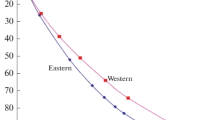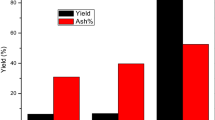Abstract
Fluff is a shredder waste made up mostly of polymeric material generated in semi-integrated steel manufacturing plants, which is usually disposed of in landfills. This occurs because fluff has a complex composition due to the diverse origin of the scrap. As wastes with a residual heating value can be thermally reused, the present study evaluated applying fluff in metallurgical coking plants as an additive to mineral coal. The composition and particle size of the coarse and fine fractions of fluff were determined, and both currents are rich in materials with high calorific value. The fine fraction was selected due to the particle size suitable for use in coke ovens, and the calorific potential was determined (18.1 MJ/kg). Metallurgical analysis of the coke in pilot scale tests (ash and sulfur contents, as well as reactivity and mechanical strength of coke) revealed that up to 1% fluff might not compromise the blast furnace performance. Given the amount of steel produced in blast furnaces worldwide, such a strategy may considerably reduce the volume of fluff destined for landfills.







Similar content being viewed by others
References
Lobato NCC, Villegas EA, Mansur MB (2015) Management of solid wastes from steelmaking and galvanizing processes: a brief review. Resour Conserv Recycl 102:49–57. https://doi.org/10.1016/j.resconrec.2015.05.025
Nagel JR (2018) An analytic model for eddy current separation. Miner Eng 127:277–285. https://doi.org/10.1016/j.mineng.2018.08.025
Jody BJ, Daniels EJ (2006) End-of-life vehicle recycling: the state of the art of resource recovery from shredder residue. Argonne Natl Lab ANL/ESD/07-8. https://publications.anl.gov/anlpubs/2007/02/58559.pdf
Mirabile D, Pistelli MI, Marchesini M et al (2002) Thermal valorisation of automobile shredder residue: injection in blast furnace. Waste Manag 22:841–851. https://doi.org/10.1016/S0956-053X(02)00071-5
Kusaka K, Iida S (2000) Sorting, compaction and solidification technologies for automobile shredder residue (ASR). JSAE Rev 21:549–554. https://doi.org/10.1016/S0389-4304(00)00073-4
Fiore S, Ruffino B, Zanetti MC (2012) Automobile shredder residues in Italy: characterization and valorization opportunities. Waste Manag 32:1548–1559. https://doi.org/10.1016/j.wasman.2012.03.026
Gent MR, Menéndez M, Muñiz H, Torno S (2015) Recycling of a fine, heavy fluff automobile shredder residue by density and differential fragmentation. Waste Manag 43:421–433. https://doi.org/10.1016/j.wasman.2015.06.010
Joung HT, Cho SJ, Seo YC, Kim WH (2007) Status of recycling end-of-life vehicles and efforts to reduce automobile shredder residues in Korea. J Mater Cycles Waste Manag 9:159–166. https://doi.org/10.1007/s10163-007-0181-1
Karagoz S, Aydin N, Simic V (2020) End-of-life vehicle management: a comprehensive review. J Mater Cycles Waste Manag 22:416–442. https://doi.org/10.1007/s10163-019-00945-y
Ni F, Chen M (2015) Research on ASR in China and its energy recycling with pyrolysis method. J Mater Cycles Waste Manag 17:107–117. https://doi.org/10.1007/s10163-014-0232-3
Plastics Europe (2018) Plastics—the Facts. https://plasticseurope.org/wp-content/uploads/2021/10/2018-Plastics-the-facts.pdf. Accessed 17 Jan 2022
Edo M, Aracil I, Font R et al (2013) Viability study of automobile shredder residue as fuel. J Hazard Mater 260:819–824. https://doi.org/10.1016/j.jhazmat.2013.06.039
Kim KH, Joung HT, Nam H et al (2004) Management status of end-of-life vehicles and characteristics of automobile shredder residues in Korea. Waste Manag 24:533–540. https://doi.org/10.1016/j.wasman.2004.02.012
Alfa Laval Aalborg (2017) Poder calorifico inferior de combustíveis. http://www.aalborg-industries.com.br/downloads/poder-calorifico-inf.pdf. Accessed 17 Jan 2022
Empresa de Pesquisa Energética (2008) Aproveitamento energético dos resíduos sólidos urbanos de Campo Grande, MS. DEN 06/08. https://cetesb.sp.gov.br/biogas/wp-content/uploads/sites/3/2014/01/mme_epe_aproveitamento_rsu_ms.pdf. Accessed 17 Jan 2022
Oliveira SFA, Brunelli DD, Gonçalves JE et al (2014) Avaliação energética da biomassa de cana-de-açúcar em diferentes indústrias sucroenergéticas. Rev Process Químicos 8:43–51. https://doi.org/10.19142/rpq.v8i16.220
Ludwig C, Hellweg S, Stucki S (2003) Municipal solid waste management. Springer-Verlag, Heidelberg
Mancini G, Tamma R, Viotti P (2010) Thermal process of fluff: Preliminary tests on a full-scale treatment plant. Waste Manag 30:1670–1682. https://doi.org/10.1016/j.wasman.2010.01.037
European Environment Agency (2013) Typical charge for legal landfilling of non-hazardous municipal waste in EU member states and regions. https://www.eea.europa.eu/data-and-maps/figures/typical-charge-gate-fee-and
Zhang M, Buekens A, Jiang X, Li X (2015) Dioxins and polyvinylchloride in combustion and fires. Waste Manag Res 33:630–643. https://doi.org/10.1177/0734242X15590651
Carpenter AM (2010) Injection of coal and waste plastics in blast furnaces. IEA Clean Coal Centre, https://usea.org/publication/injection-coal-and-waste-plastics-blast-furnaces-ccc166
Goto H, Ibaraki T, Kondoh H et al (2002) Plastics recycling by a coke-oven fromwaste plastics to chemical raw materials. Nippon Steel Tech Rep 86:10–13
Kato K, Nomura S, Uematsu H (2002) Development of waste plastics recycling process using coke ovens. ISIJ Int 42:S10–S13
Kato K, Nomura S, Uematsu H (2003) Waste plastics recycling process using coke ovens. J Mater Cycles Waste Manag 5:98–101. https://doi.org/10.1007/s10163-003-0089-3
Okuwaki A (2004) Feedstock recycling of plastics in Japan. Polym Degrad Stab 85:981–988. https://doi.org/10.1016/j.polymdegradstab.2004.01.023
Annoni R, Souza PS, Petrániková M et al (2013) Submerged-arc welding slags: characterization and leaching strategies for the removal of aluminum and titanium. J Hazard Mater 244–245:335–341. https://doi.org/10.1016/j.jhazmat.2012.11.053
Buekens A, Zhou X (2014) Recycling plastics from automotive shredder residues: a review. J Mater Cycles Waste Manag 16:398–414. https://doi.org/10.1007/s10163-014-0244-z
Bethell PJ (2013) Economic factors affecting coal preparation: plant design worldwide and case studies illustrating economic impact. Coal Handb Towar Clean Prod 1:445–466. https://doi.org/10.1533/9780857097309.2.445
Trouve G, Kauffmann A, Delfosse L (1998) Comparative thermodynamic and experimental study of some heavy metal behaviours during automotive shredder residues incineration. Waste Manag 18:301–307. https://doi.org/10.1016/S0956-053X(98)00040-3
Carvalho LAL, Campos AMA, Assis PS (2021) Quality evaluation of metallurgical coke produced with sawdust and different mixtures of coal. REM 74:219–223
Nourreddine M (2007) Recycling of auto shredder residue. J Hazard Mater 139:481–490. https://doi.org/10.1016/j.jhazmat.2006.02.054
Grigore M, Sakurovs R, French D, Sahajwalla V (2006) Influence of mineral matter on coke reactivity with carbon dioxide. ISIJ Int 46:503–512. https://doi.org/10.2355/isijinternational.46.503
Nomura S, Kitaguchi H, Yamaguchi K, Naito M (2007) The characteristics of catalyst-coated highly reactive coke. ISIJ Int 47:245–253. https://doi.org/10.2355/isijinternational.47.245
Diez MA, Alvarez R, Melendi S, Barriocanal C (2009) Feedstock recycling of plastic wastes in cokemaking. Coke Chem 52:464–466. https://doi.org/10.3103/S1068364X09100111
Sakimoto N, Takanohashi T, Sakai K et al (2016) Effect of volume breakage due to DI measurement on pore structure in coke. ISIJ Int 56:1948–1955. https://doi.org/10.2355/isijinternational.ISIJINT-2015-388
Kinch D (2021) Global steel output jumps 12% on year in June to 168 million mt: worldsteel. https://www.spglobal.com/platts/en/market-insights/videos/market-movers-asia/011722-china-india-omicron-oil-winter-olympics-indonesia-coal-steel-lithium-electric-vehicles-carbon-markets. Accessed 17 Jan 2022
Acknowledgements
The authors wish to acknowledge Gerdau and CNPq (PQ1C Grant Number 304018/2020-1).
Author information
Authors and Affiliations
Corresponding author
Additional information
Publisher's Note
Springer Nature remains neutral with regard to jurisdictional claims in published maps and institutional affiliations.
Rights and permissions
About this article
Cite this article
Pratti, G.M.R., Detoni, I.d., de Souza Resende, G.P. et al. Use of fluff in a coking coal blend in a pilot scale. J Mater Cycles Waste Manag 24, 702–711 (2022). https://doi.org/10.1007/s10163-022-01352-6
Received:
Accepted:
Published:
Issue Date:
DOI: https://doi.org/10.1007/s10163-022-01352-6




